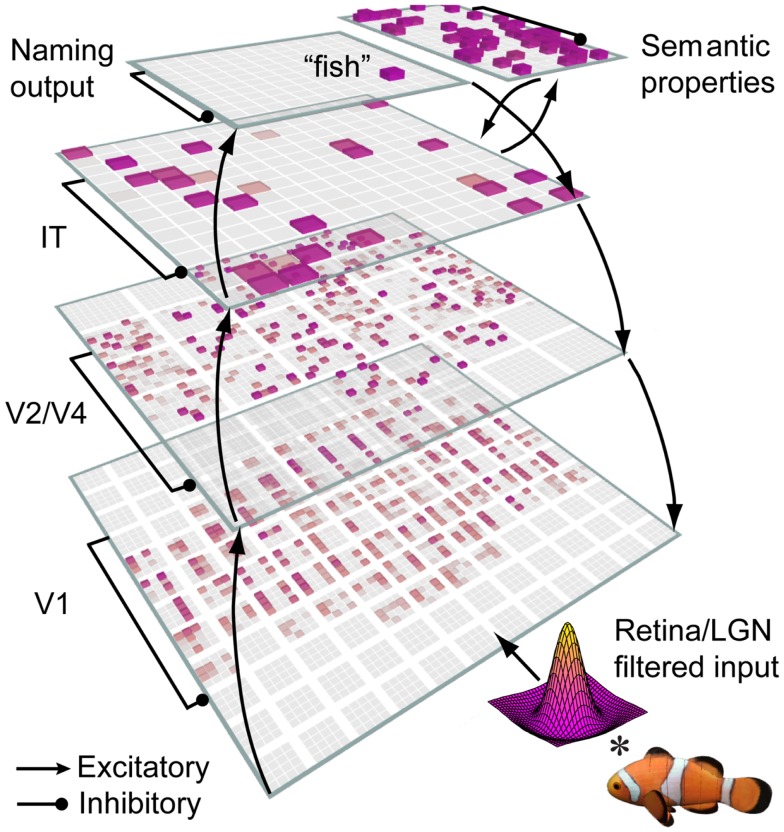Figure 1.
Architecture of the LVis model. The LVis model is based on the anatomy of the ventral pathway of the brain, from primary visual cortex (V1) through extrastriate areas (V2, V4) to inferotemporal (IT) cortex. V1 reflects filters that model the response properties of V1 neurons (both simple and complex subtypes). In higher-levels, receptive fields become more spatially invariant and complex, reflecting organizational influence from non-visual properties like semantics. All layers are reciprocally connected, allowing higher-level information to influence bottom-up processing during both the initial learning and subsequent recognition of objects, and contain local, recurrent inhibitory dynamics that limit activity levels across layers.

